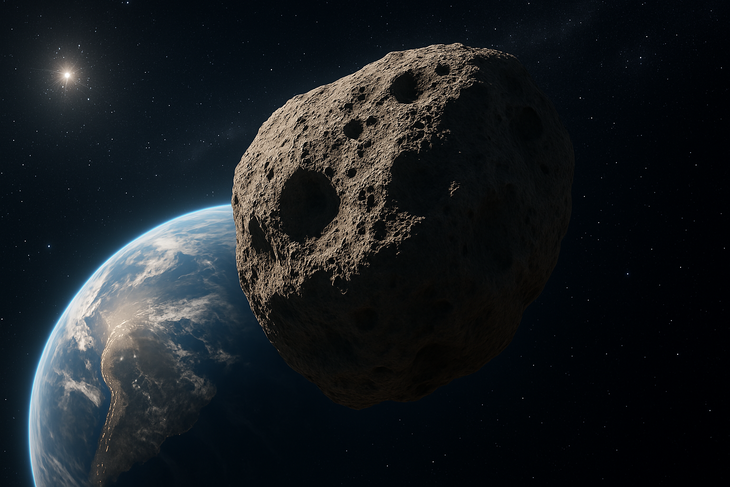
Asteroid Just Approached Earth Could Cause a Global Extinction Event - AI-Generated Image
This asteroid, called 887 Alinda, could lead to a global extinction event if it collides with our planet, according to Science Alert.
Asteroid "threatening" Earth
887 Alinda lies just outside Earth's orbit and orbits the Sun three times, in the time it takes Jupiter to complete one orbit. Since Jupiter's orbit is 12 years long, the asteroid will return to the same orbit in four years, in 2028. Asteroids of this type are dangerous due to their periodic return.
Scientists assess 887 Alinda as even more dangerous than 2024 YR4, the asteroid known as the "city killer", which is 40 - 90m in diameter.
887 Alinda was discovered in 1918 and has made several close approaches to Earth every four years. Its name has therefore come to describe any asteroid that orbits the Sun every four years or so.
According to The Forbes, Alinda asteroids spend most of their time in the asteroid belt between Mars and Jupiter and rarely come close to a planet.
Astronomer Gianluca Masi from the Virtual Telescope project said that between now and 2200, only a few asteroids the size of 887 Alinda will fly within 15 million km of Earth.
Risk of collision
According to the Independent , although an asteroid the size of 887 Alinda could cause catastrophic damage if it collided with Earth, its 2025 approach does not pose a threat. Instead, 887 Alinda's large size makes it an ideal observation target for amateur astronomers.
The site also said that NASA has confirmed that 887 Alinda does not pose a threat to Earth for at least the next century. 887 Alinda's next close approach to Earth is expected to take place in 2087.
Although Earth is just a tiny speck in the vast solar system, it still has its fair share of asteroid impacts. The last time an asteroid caused damage was on February 15, 2013, when an undetected asteroid exploded over Chelyabinsk, Russia, shattering windows and injuring several people.
In 1908, a larger explosion occurred in Tunguska, Siberia, Russia, flattening a large forest but causing few casualties because the area was sparsely populated.
While astronomers are busy surveying the skies, space-observing projects like the upcoming Near-Earth Object (NEO) telescope could be more efficient at detecting asteroids.
According to Amy Mainzer, NEO project leader, "we only know about 40% of asteroids that are large enough to cause serious regional damage and approach close to Earth's orbit."
Scheduled to launch in late 2027, NEO will “detect, track, and classify the most dangerous asteroids and comets,” helping to achieve a goal set by the US Congress of identifying 90% of these objects.
Source: https://tuoitre.vn/diem-mat-tieu-hanh-tinh-nguy-co-gay-tuyet-chung-neu-va-cham-trai-dat-20250329154146769.htm



![[Photo] Prime Minister Pham Minh Chinh receives delegation from the US-China Economic and Security Review Commission of the US Congress](https://vphoto.vietnam.vn/thumb/1200x675/vietnam/resource/IMAGE/2025/5/7/ff6eff0ccbbd4b1796724cb05110feb0)


![[Photo] General Secretary attends the parade to celebrate the 80th anniversary of the victory over fascism in Kazakhstan](https://vphoto.vietnam.vn/thumb/1200x675/vietnam/resource/IMAGE/2025/5/7/dff91c3c47f74a2da459e316831988ad)
















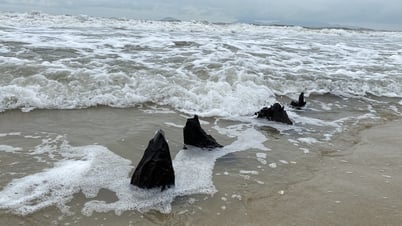
![[Photo] Sparkling lanterns to celebrate Vesak 2025](https://vphoto.vietnam.vn/thumb/1200x675/vietnam/resource/IMAGE/2025/5/7/a6c8ff3bef964a2f90c6fab80ae197c3)
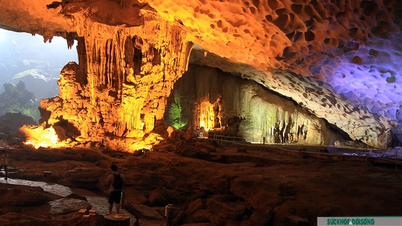



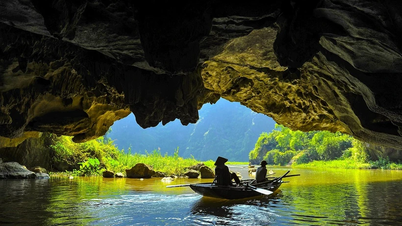










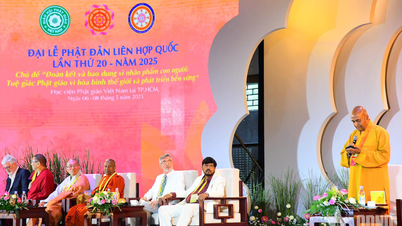



































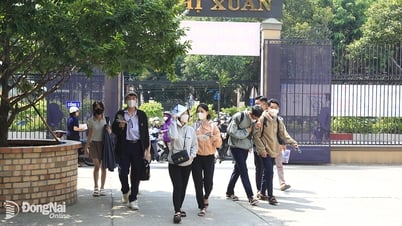
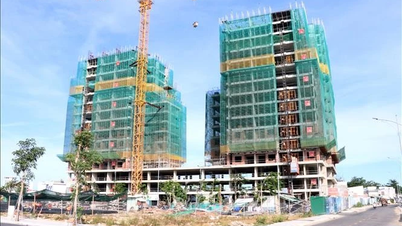










Comment (0)